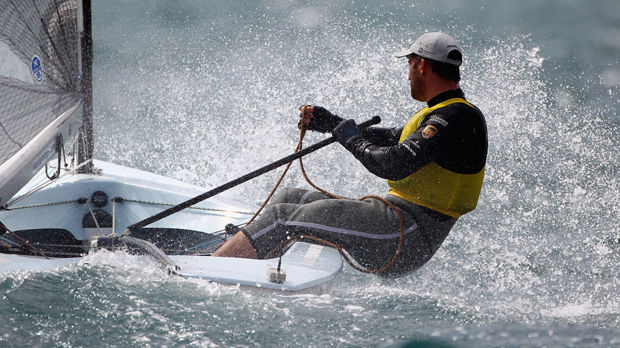Held at ExCeL, the competition will take place from 28 July – 7 August and see a total of 260 athletes – 156 men and 104 women – testing their strength in their attempts to win a medal.
Competitors in Weightlifting are divided into 15 weight categories, eight for men and seven for women, with each one a medal event at London 2012.
All entries for Wrestling will be confirmed following the sport entries deadline on 9 July 2012.
View the London 2012 Weightlifting competition schedule
Men’s Weightlifting featured at the first modern Olympic Games in 1896, with women’s Weightlifting introduced at Sydney 2000.
A simple, engaging test of human strength, where competitors are required to perform two types of lift - the ‘clean and jerk’ and the ‘snatch’ - and the athlete lifting the highest combined total wins.
In the ‘clean and jerk’ the barbell is explosively lifted to the chest and then raised above the head. In the ‘snatch’, the barbell is lifted from the floor to over the head in one continuous, clean movement.
The competition starts with each athlete naming the weight they will start on, with the lowest going first (meaning some weaker lifters can finish before the real stars have started).
Each lifter has three attempts at each weight and the weight on the bar always goes up until there is one man or woman standing. In a tie, the lifter with the lowest body weight is the winner.
A lift is counted as an attempt as soon as it rises above the knee and is only deemed successful if the lifter raises it above he head with locked arms and legs straight until the judge is satisfied it was under control. A buzzer will sound as soon as the judge deems the weight to have been lifted successfully.
Events / disciplines
Men’s 56kg
Men’s 62kg
Men’s 69kg
Men’s 77kg
Men’s 85kg
Men’s 94kg
Men’s 105kg
Men’s +105kg
Women’s 48kg
Women’s 53kg
Women’s 58kg
Women’s 63kg
Women’s 69kg
Women’s 75kg
Women’s +75kg
Gold medals available
15
Competitors in Weightlifting are divided into 15 weight categories, eight for men and seven for women, with each one a medal event at London 2012.
All entries for Wrestling will be confirmed following the sport entries deadline on 9 July 2012.
View the London 2012 Weightlifting competition schedule
Men’s Weightlifting featured at the first modern Olympic Games in 1896, with women’s Weightlifting introduced at Sydney 2000.
A simple, engaging test of human strength, where competitors are required to perform two types of lift - the ‘clean and jerk’ and the ‘snatch’ - and the athlete lifting the highest combined total wins.
In the ‘clean and jerk’ the barbell is explosively lifted to the chest and then raised above the head. In the ‘snatch’, the barbell is lifted from the floor to over the head in one continuous, clean movement.
The competition starts with each athlete naming the weight they will start on, with the lowest going first (meaning some weaker lifters can finish before the real stars have started).
Each lifter has three attempts at each weight and the weight on the bar always goes up until there is one man or woman standing. In a tie, the lifter with the lowest body weight is the winner.
A lift is counted as an attempt as soon as it rises above the knee and is only deemed successful if the lifter raises it above he head with locked arms and legs straight until the judge is satisfied it was under control. A buzzer will sound as soon as the judge deems the weight to have been lifted successfully.
Events / disciplines
Men’s 56kg
Men’s 62kg
Men’s 69kg
Men’s 77kg
Men’s 85kg
Men’s 94kg
Men’s 105kg
Men’s +105kg
Women’s 48kg
Women’s 53kg
Women’s 58kg
Women’s 63kg
Women’s 69kg
Women’s 75kg
Women’s +75kg
Gold medals available
15


.jpg)






















